All issues

Volume 68, Issue 3
Displaying 1-6 of 6 articles from this issue
- |<
- <
- 1
- >
- >|
-
Katsuaki Akaoka, Yoichiro Maruyama2004 Volume 68 Issue 3 Pages 181-184
Published: 2004
Released on J-STAGE: June 24, 2005
JOURNAL FREE ACCESSFor the separation of radionuclide from the radioactive metallic waste generated by the decommissioning of nuclear facilities, a new method combined with the distillation and laser separation is being developed. The characteristics of fractional distillation for duralumin (Aluminum alloy 7075: Al-5.6Zn-2.5Mg-1.6Cu-0.25Cr) are studied experimentally and theoretically for the first step. In the experiment, the duralumin (378.7 mg) is heated to 1773 K with the rate of 200 K/h and vaporized. The ion current of its components within the vapor is measured using quadrupole mass spectrometer. In the simulation, the vaporization rate of the components from the melt is calculated by using the Langmuir's equation and the Henry's law. The results of the simulation agree well with the experimental ones, and it is indicated that Al, Mg and Zn could be fractionated from duralumin.View full abstractDownload PDF (723K) -
Zhenkai Xie, Teruyuki Ikeda, Yosiyuki Okuda, Hideo Nakajima2004 Volume 68 Issue 3 Pages 185-190
Published: 2004
Released on J-STAGE: June 24, 2005
JOURNAL FREE ACCESSLotus-type porous copper with a high number of unidirectional cylindrical pores was fabricated by unidirectional solidification of melt dissolving hydrogen in a pressurized hydrogen atmosphere.
The sound absorption coefficient of porous copper whose specimen face has many open pores was measured by a standing-wave method in the range up to the sound frequency of 4 kHz.
The absorption coefficient increases with increasing frequency. The absorption coefficient increases with increasing porosity and specimen thickness, while it decreases with increasing pore size. In addition, it was understood that the absorption coefficient of lotus-type porous materials can be determined by using the attenuation constant.View full abstractDownload PDF (3546K) -
Akinori Shinagawa, Kazuaki Sasaki, Hiroyuki Kato2004 Volume 68 Issue 3 Pages 191-197
Published: 2004
Released on J-STAGE: June 24, 2005
JOURNAL FREE ACCESSInteraction of an edge dislocation with a lamellar inclusion, which has a finite length and is on the interface of a bimetallic medium, is analyzed by a finite element model of an edge dislocation considering initial strain. The force exerted on the dislocation due to the elastic interaction can be numerically obtained by calculating the reduction of the potential energy, firstly proposed by Peach-Koehler. The glide and climb components of the force are computed. Contour plots for these components are presented. It is shown that, for certain combinations of material constants, the dislocation has an equilibrium position near the inclusion. Moreover, the interaction is affected by the direction of the Burgers vector with respect to the interface.View full abstractDownload PDF (1491K) -
Naoki Yamaguchi, Kazuya Oguri, Akira Tonegawa, Yoshitake Nishi2004 Volume 68 Issue 3 Pages 198-201
Published: 2004
Released on J-STAGE: June 24, 2005
JOURNAL FREE ACCESSInfluences of sheet electron beam irradiation on brittleness, fracture load and fracture toughness were studied for silica glass surface. The irradiation, which is one of short-time treatments at low temperature below boiling point of water, restrained the brittleness and enhanced fracture load and fracture toughness of silica glass surface. The brittleness restrain can be explained by the stress relaxation, which was induced by increase in free volume related to dangling bonds.View full abstractDownload PDF (862K) -
Atsushi Kadowaki, Tomohiro Shinoda, Naoki Yamaguchi, Kunio Yamada, Kaz ...2004 Volume 68 Issue 3 Pages 202-205
Published: 2004
Released on J-STAGE: June 24, 2005
JOURNAL FREE ACCESSEffects of electron beam (EB) irradiation on bending stress-strain curve were studied for soda glass. The stress-strain curves were measured by standard bending test. EB irradiation enhanced bending fracture stress and rigidity and then also enhanced the crack length of homogeneously fractured sample. The enhancements were mainly explained by the enlargement of bonding energy for silicon-oxygen atomic pair in atomic network structure of soda glass. The enlargement was probably induced by relaxation of the network structure, when EB irradiation generated the dangling bonds at the weaker bonded metal-oxygen atomic pairs in the network structure.View full abstractDownload PDF (955K) -
Effects of Alloying Additions on the Creep Strength of a Fourth Generation Single-Crystal SuperalloyYutaka Koizumi, Toshiharu Kobayashi, Tadaharu Yokokawa, Makoto Osawa, ...2004 Volume 68 Issue 3 Pages 206-209
Published: 2004
Released on J-STAGE: June 24, 2005
JOURNAL FREE ACCESSHigh strength single crystal (SC) superalloys for jet-engines and gas turbines have been developed in the “High Temperature Materials 21” project. In the context of this project, the authors previously developed the world strongest superalloy TMS-162 using an alloy TMS-138 as a base and adding Mo as a strengthening element as well as Ru as a phase stabilizing element. In the present study, Ta, Nb and Re were examined as possible strengthening elements instead of Mo. Ru was also added to stabilize the microstructure. Creep tests of the SC samples showed that Re had a similar effect as Mo for strengthening the SC superalloy, whereas the effects of Ta and Nb additions were not so significant as those of Re and Mo. These were attributed to the effects of the elements on the lattice misfit; Re and Mo are known to be partitioned preferentially to the γ phase rather than to the γ′ phase so that the aγ-aγ′ misfit increases. This is considered to be the reason for the excellent creep strength of the sample with the Re addition.View full abstractDownload PDF (1896K)
- |<
- <
- 1
- >
- >|